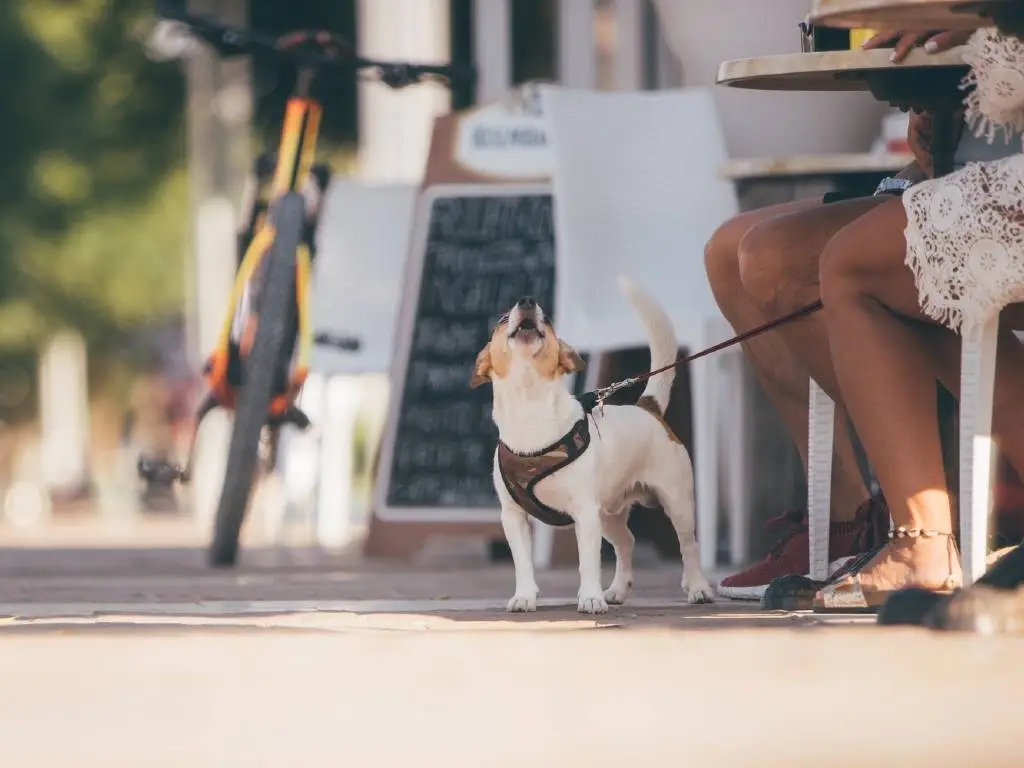
8 Expert Tips for Traveling Internationally with a Pet
Table of Contents
For many of us, pets are family. We can’t imagine our worlds without our furry friends, even when it comes to vacations. Travel can definitely be even more fun with your dog along for the adventure, but you’ll want to be sure you know the ins and outs of international pet travel before planning your trip.

Before you travel with your pet, there’s a few things you’ll want to educate yourself on, from entry requirements and quarantine to preparing your pet for travel.
1. Research your destination’s rabies status and requirements
Traveling internationally with a pet can be complicated, more so because of the regulations and paperwork than because of the actual trip itself. The reason for all those extra rules, regulations, and procedures boils down to one main reason: rabies.
Many countries are proudly rabies-free and want to keep it that way. Countries like the United States, which is classed as rabies-controlled, have regulations in place to help control the spread. That means when traveling from a rabies-controlled country like the US, pets pose a risk when entering rabies-free countries like the United Kingdom. Bringing your pet into rabies-free countries might mean extra time spent at customs, or even a mandatory quarantine for your pet up to a few months in length.
Rabies classification varies from country to country and what the United States might consider as rabies-free may not be the same risk categorization applied by other countries like the UK or Australia. For pets traveling to or returning to the United States, refer to the CDC’s Federal Registrar Notice for the latest country-by-country guidance. The UK’s rabies risk categorization is widely used as a guide for pet travel within the EU.
You’ll also need to check pet entry requirements at your port of entry. In most cases, you'll have to go to the vet in the airport and present both your pet and the USDA APHIS paperwork to them, which they'll then sign and stamp before letting you clear customs.
For example, some airports, like LIS, require you to make an appointment ahead of time. Others, like PTY, have very limited hours for the vet (Copa doesn't carry pets on weekends, because PTY's vet is not on duty, and therefore it's impossible to legally enter into the country with a pet on the weekend).
2. Talk to your vet
Veterinarians are your best resource when preparing to travel both domestically and internationally with a pet. Depending on the requirements of your destination country, your pet may need additional vaccinations or treatments administered within a certain time frame and a 15-digit ISO compliant microchip. You may also need import permits or pre-travel approval. And most certainly, your pet will require a health certificate within a specific validity period certifying your pet is healthy and fit for travel.
Start your pet travel planning with a phone call or email to your veterinarian. Some veterinarians may be experienced with international travel and can help answer any questions you may have, but it’s also wise to download this handy checklist to help prepare your pet for their vet visit and ensure your pet is up to date on all essential vaccinations.
Be sure that the veterinarian is USDA accredited. The veterinarian must provide paperwork including a health certificate for travel.
3. Get your health certificate stamped by APHIS
Most countries require the health certificate to be countersigned and stamped by APHIS (Animal and Plant Health Inspection Service), and APHIS will not accept any health certificates from veterinarians not USDA accredited. To get the certificate signed and stamped by APHIS, you’ll need to go to APHIS office in person within a certain time frame (which varies by destination country) before the trip.
If your current vet is not USDA accredited, they may be able to recommend a veterinarian who is. Otherwise, search for USDA certified veterinarians in your area through the USDA APHIS database.
If you’re planning to travel with your pet internationally to multiple countries in the European Union or you’ll be going to countries in the EU regularly, you can get a pet passport. Only issued within the EU, this blue booklet serves as a health record for your pet and seamlessly lets your pet travel across borders within Europe without quarantine through the Pet Travel Scheme (“PETS”). It’s recognized throughout the EU and even in some overseas departments. You don’t need to apply. Simply schedule an appointment with a licensed veterinarian while in the EU, and the pet passport can be issued during the appointment. Just be sure to bring along vaccination and health records.
If you’ll be out of the country for more than 28 days, you’ll have to visit a veterinarian abroad to get the requisite paperwork to reenter the US.
4. Book a flight for your pet

After discussing your travel plans with your veterinarian and ensuring you have a plan for your pet to meet all the requirements of your destination, you’re ready to research flights. You’ll want to choose direct flights or flights with the least number of connections to your final destination. Also consider your departure and arrival times, choosing the least hot times of the day to travel for your pet’s comfort.
Airlines only allow a specific number of pets to travel per flight. In the past the only way to add a pet to your reservation was to book via phone, though this is starting to change (for example, United allows you to book pets online). You’ll want to ensure that there is space for your pet on each leg of your journey as early as possible.
Service animals, emotional support animals, and small pets that can fit in a carrier that fits under the seat in front of you may be able to travel in the cabin with you. Keep in mind that the space allotted under the seat for carriers varies depending on the type of airplane, so be sure to check online or inquire with an airline representative about acceptable carrier dimensions for your specific flights.
Larger pets must either travel in the cargo hold (though not that some airlines won't let pets travel in the hold if the departure airport or destination airport will be above a certain temperature) or separately as an air cargo shipment. There are various professional pet shipping companies who safely handle the shipment of pets all over the world, and a service like this may be the most comfortable and safe way for your pet to travel.
>> Read everything you need to know about flying with a pet.
5. Airline pet policies for international travel
The rules for pets traveling internationally vary from airline to airline. If you do decide your pet will travel with you instead of with a pet shipping company, be sure to review your airline’s specific policies (usually google the airline name and “pet policy” brings you the right results). The website Dog Jaunt also has a handy overview of pet policies for in-cabin travel for the most popular airlines.
Some airlines do not allow pets in-cabin for transatlantic and transpacific flights or flights over a certain number of hours in length. Airlines also have age and weight limits, breed restrictions, and carrier size dimensions limits.
Generally, pets need to be at least 8-12 weeks and under 17 pounds, and the cost can be as high as $200 each way.
6. Choosing a carrier or kennel for international travel
No matter if your pet is flying in the cabin with you, in the cargo hold, or with a pet shipping company, you’ll need a kennel. Your pet must be able comfortably stand and turn around in their kennel. Dogs and cats require a 2-inch clearance above their heads when standing, so be sure to choose the right size carrier for your pet’s size and weight.
When it comes to choosing a kennel, you’ll want to select one that is strong and durable to endure the rigors of air travel. Metal fasteners are preferable. There should be plenty of ventilation on all sides, and the kennel should have a solid, leakproof bottom. This option from Wild One is a great one.
If your pet is traveling in the cabin with you, soft sided carriers work best. They have a little more give and tend to fit better under the seat.
Just like luggage can get banged and dinged, so can your pet’s kennel. You want to be confident that the kennel holds up and provides the best protection for your precious cargo.
Don’t forget to get your pet used to their kennel at home before you leave on the trip. With your furry friend feeling like their kennel is a safe and secure space all their own, their trip will be much better.
7. Preparing your pet for travel
Now that you’re finally ready to go on your trip, you’ll want to make the journey as relaxed and comfortable for your pet.
You can include food and water in your pet’s kennel. Food should be placed in a clear ziplock bag and taped to the kennel. You can freeze the water in one water bowl and attach it to the inside of the kennel door. Also attach an empty bowl so that airline staff can fill it with some fresh water.
A blanket is also fine to include so your pet can be comfy and cozy. The scents from home are reassuring for your pet. Be aware that toys or anything additional placed in the kennel beyond a blanket, bowls and food and water is typically removed.
Stop feeding your pet about four hours prior to travel, but allow them to continue drinking right up until you drop them off for the flight. Be sure to have a walk and potty break just before checking your pet in for their flight.
If your pet is flying in-cabin with you, take them on a test drive by taking them for a car ride in their carrier—preferably somewhere they love, like the dog park, so they associate the carrier with happy times. A prepared pet is the best way to keep them calm in flight.
8. On vacation with your pet

It’s already been an adventure just to get your pet to your vacation destination. But once you’re there, you want to ensure they have as much as you do. BringFido maps out pet-friendly hotels, restaurants, and activities, though it can be limited outside the US. A better bet is asking some pet-loving locals for their recommendations. Joining some English speaking expat groups in your destination can help, and could prove to be very helpful in case you need to find a local vet while on your trip.
Don’t forget to carry copies of your pet’s documents (keep the originals safe; you may need them for the return trip) and have them handy to present if asked by local authorities.
>> Get tips for roadtripping with pets or check out our picks for the most pet-friendly airports. Join Going and get cheap flights and travel tips delivered right to your inbox.
Going may earn affiliate commission from some of the links in this article.
Published August 1, 2023
Last updated December 21, 2023
Treat your travel to cheap flights
Most deals are 40-90% off normal prices with great itineraries from the best airlines. If it's not an amazing deal, we won't send it. Sign up for free to start getting flight alerts.




